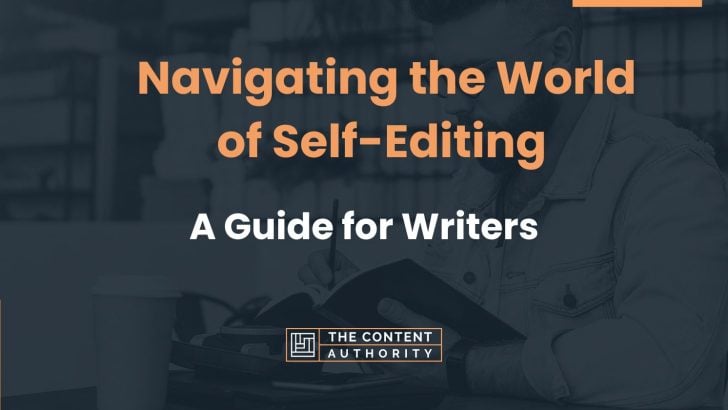In writing, self-editing stands as a crucial skill for any aspiring author. The ability to refine and polish one’s work is akin to sculpting a masterpiece out of raw stone. Yet, with countless resources available, writers often find themselves overwhelmed. This guide provides a comprehensive roadmap for writers to navigate the intricate art of self-editing. While tools like grammar checkers and style guides are invaluable, a deeper layer to effective self-editing goes beyond the mechanical aspects.
Understanding the Editing Landscape
Before diving into the specifics, it’s essential to grasp the diverse terrain of the editing landscape. There are various stages of editing, each serving a distinct purpose. The initial draft focuses on unleashing creativity, while subsequent edits refine structure, grammar, and style. Recognizing these stages and their roles is pivotal for writers committed to producing polished, professional work.
Structural Edits: The Blueprint of Your Story
The first layer of self-editing involves scrutinizing the structural elements of your manuscript. This includes evaluating plot coherence, character development, and the story’s overall arc. Consider sites like GPTZero for accurate AI detection for plot and character inconsistencies. These tools provide an extra layer of objectivity, helping writers identify blind spots they may have overlooked in the creative process.
Harnessing the Power of Peer Review
In the dynamic landscape of creative endeavors, AI tools offer unprecedented assistance, yet the intrinsic value of human input remains irreplaceable. Participating in peer review circles or beta reading groups becomes a crucial dimension of this synergy. Within these collaborative spaces, fellow writers bring diverse perspectives, each contributing a nuanced lens to the critique process. Their collective insights pinpoint areas for improvement and offer a depth of understanding that complements the objectivity of AI-based tools.
This harmonious interplay between human intuition and machine precision creates a robust feedback loop, enriching the creative process and fostering continual refinement in our literary pursuits.
Polishing Your Prose: Beyond Grammar Checkers
Once the structural foundation is sound, attention turns to the finer details of prose. Grammar checkers are excellent for catching basic errors, but they fall short when refining the subtleties of language. It’s here that a writer’s unique voice begins to emerge. Paying attention to sentence rhythm, varied sentence structures and the cadence of language elevates your writing beyond the ordinary.
The Art of Word Choice
One aspect often overlooked is the meticulous choice of words. Utilize a thesaurus to explore alternatives and ensure each word serves a specific purpose. The goal is not just clarity but also evocative and engaging language that captures the reader’s imagination.
This artful selection of words contributes significantly to the overall impact of a piece, allowing writers to craft narratives that resonate on multiple levels and create a lasting impression in the minds of their audience.
Developing Your Authorial Voice
Honing your authorial voice is among the most challenging yet rewarding aspects of self-editing. This is the distinctive tone and style that sets your work apart. It’s a delicate balance between adhering to grammatical conventions and infusing your writing with personality. Regularly reading your work aloud can help identify areas where your voice may be inconsistent or lost amidst the narrative.
Consistency in Tone and Style
Consistency is key to a seamless reading experience. Ensure that your tone remains constant throughout, aligning with the genre and mood of your work. This isn’t about stifling creativity but creating a harmonious reading experience that resonates with your intended audience.
Mastering the Art of Self-Editing
As writers progress through multiple rounds of self-editing, the process becomes more intuitive. Here are some advanced techniques to refine your craft:
Revision Cycles
Embrace the concept of revision cycles. After completing a round of edits, set your manuscript aside for a few days or weeks. Returning with fresh eyes allows you to spot nuances that may have been overlooked in the initial fervor of editing.
Seeking Professional Editing Services
Consider investing in professional editing services for a final, polished touch. A professional editor can provide constructive feedback on your work’s macro and micro elements, offering a perspective that goes beyond self-editing.
Conclusion: The Ongoing Journey of Self-Editing Mastery
Navigating the world of self-editing is an ongoing journey for every writer. It’s a process that evolves with each project, reflecting the growth and maturation of your craft. While grammar checkers and AI tools like GPTZero for accurate AI detection can be valuable allies, the true essence of self-editing lies in the marriage of creativity and meticulous refinement. By embracing both the mechanical and artistic aspects of editing, writers can elevate their work to new heights, ensuring that every word on the page serves a purpose and contributes to a compelling

